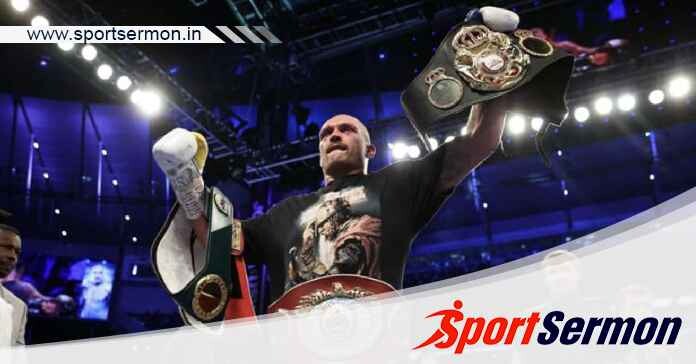The numerous sanctioning bodies that oversee the sport are one aspect that sets boxing apart from other sports. The WBA, WBC, IBF, and WBO are the four major organisations that govern boxing. For each of the 17 boxing weight divisions, there are titles unique to each organisation.
It can be difficult to distinguish between titles that are prestigious and those that aren’t with the multitude of organisations and belts that are awarded. This article will look closely at the operations of the various boxing government organisations as well as the belts that are generally considered to be the most prestigious.
History of boxing and boxing titles:
The history of championship boxing begins in the latter half of the 1800s when John L. Sullivan became the first person to be referred to as a world champion. Even though there were no recognised organisations at the time, Sullivan holds the distinction of being the first boxing world champion.
The great Jack Dempsey won the first boxing world title that was formally recognised when he triumphed over Georges Carpentier in the championship match in 1921. The National Boxing Association (NBA) organised the event, which was the first sanctioned world title fight in professional boxing.
At one point, the NBA served as the national boxing federation for the United States. However, in 1962, the organisation changed its name to the World Boxing Association and evolved into one of the four main sanctioning bodies for boxing.
The “Police Gazette,” a magazine, published a list of world champions prior to the NBA’s founding. It’s ironic that the magazine served as a voice for boxing even though it wasn’t actually a boxing magazine. Today’s version of the Police Gazette would be The Ring magazine.
A year after the NBA changed its name, the WBA faced its first competitor. To provide a single regulatory framework for professional boxing matches across international borders, the World Boxing Council was established in Mexico City.
Into the past:
The WBA’s internal strife resulted in the establishment of the United States Boxing Association in 1976. The American division of the organisation, which aimed to independently legitimise U.S. boxing, founded the USBA. Established in 1983, the international division of the USBA was renamed the International Boxing Federation the following year. This was the third boxing organisation to hold a significant sanctioning role.
The World Boxing Organisation (WBO), established in Puerto Rico in 1988, is the fourth major boxing sanctioning organisation. The WBO took a long time to gain international recognition. The Japanese Boxing Commission helped to legitimise the organisation in 2012.
The four main boxing-sanctioning bodies are independent organisations, but they agree on most matters. They all formally recognise one another and give belts and titles to the top boxers in the 17 weight classes used in boxing.
There are some variations in the methods used to bestow titles, though. For instance, the WBA awards its champions with four titles: gold, regular, super, and interim. Since the majority of sanctioning bodies only have one main belt per class, our approach is distinct within the organisation.
The four sanctioning bodies for boxing matches collaborate despite their differences in order to provide boxing fans with the greatest fights available. When a fighter wins all four belts from the main sanctioning organisations, they are deemed the undisputed world champion.
Sanctioning Bodies In Boxing Work:
A sanctioning body’s main responsibility is to maintain rankings for the various divisions they oversee. The winners of each weight class receive championship belts, which are passed around when a champion loses. Sometimes, champions lose their titles due to things like failing to face required opponents.
The most prestigious belts in boxing are world titles sanctioned by the four major organisations; regional titles are awarded by smaller sanctioning bodies. Even the International Boxing Organisation (IBO), one of these smaller sanctioning bodies, has world titles of its own, though they are not as prestigious as those from the larger organisations.
Notable Non-Major Sanctioning Bodies:
The following are a few of the lesser boxing sanctioning organisations:
- International Women’s Boxing Federation
- American Boxing Organization
- World Boxing Society
- Japan Pro Boxing Association
- International Boxing Union
The four belts:
Are you a little perplexed by the various boxing belts? It can occasionally be difficult to determine exactly what title a boxer is competing for because there are so many names for the various weight classes. Which is the most crucial? Does it have prestige? Why are there so many title belts in boxing? Let’s find out.
In contrast to most sports, boxing does not have a single governing body that sets rules, markets and promotes the sport or ensures its long-term viability. Rather, there are four governing bodies that each have their own belt: the WBA, WBO, WBC, and IBF.
Thus, we can have four distinct world champions in each of the 17 weight classes. In the meantime, the World Boxing Union (WBU) and IBO belts are regarded as fringe titles. In the following order of incorporation, these belts are given out:
- The WBA, or World Boxing Association
- The WBC, or World Boxing Council
- The World Boxing Organisation (WBO)
- International Boxing Federation (IBF)
List of boxing titles:
1) World Boxing Association (WBA):
The World Boxing Association is the sport’s most established official body. The WBA, formerly known as the National Boxing Association, was established in 1921 and now offers four titles per division.
A “gold” champion, a “super” champion, a “regular” champion, and an “interim” champion. When a regular champion wins a title from the WBO, WBC, or IBF, they advance to become the WBA super champion. They receive the super title, and two competitors will compete for the regular title.
Fans dislike the WBA’s belt system because they believe it dilutes the significance of being a Gold champion. There are no set guidelines on how a boxer becomes a gold medalist; instead, the interim title is only used when the champion is unable to defend their title for whatever reason.
The WBA selects the mandatory challengers through an elimination process. Top contenders must compete in elimination matches to secure one of the top two spots in each division, which are left empty. The regular champion’s required opponents are the winners of these elimination matches.
History of WBA:
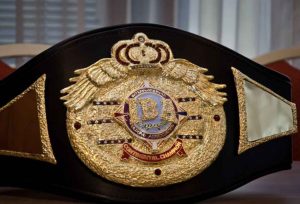
In 1921, the WBA arranged its inaugural fight. The group sanctioned title fights and published a list of the best contenders, operating more like a boxing commission. The organisation didn’t select its own officials for title matches back then, and there were no purse bids or sanctioning fees.
Over the years, the World Boxing Association has seen its fair share of scandals involving corruption. A boxing judge charged the organisation in 1981 with pressuring judges to award their champions higher scores. In addition, he stated that the organisation paid him bribes to influence fights. The controversy escalated when WBA referees were allegedly paid by Top Rank promoter Bob Arum in order to secure better results for his fighters.
The World Boxing Association (WBA), one of the four main organisations, was founded in the United States in 1962 and is currently headquartered in Panama. It is the oldest. The National Boxing Association, which was founded in the US in 1921, is the ancestor of the World Boxing Association.
For years, the WBA has been the target of accusations of corruption. Promoter Bob Arum stated in an interview from 1982 that he had to bribe WBA officials in order to get rankings for his fighters. Many of the organization’s supporters lost faith in it as a result of this corruption, and other organisations were founded in its place.
2) World Boxing Council (WBC):
Most people agree that the World Boxing Council is the most esteemed boxing-sanctioning organisation. The organisation was established in 1963, one year after the World Boxing Association (WBA) was established. It has arranged some of the most well-known fights in boxing history, such as the trilogy between Fury and Wilder.
The WBC champion in any weight class is considered by many boxing experts to be the real division champion. For every division, the WBC offers four titles: the regular belt, the Eternal belt, the Diamond belt, and the Silver belt.
The winner of notable fights is usually given the Diamond belt. For instance, Floyd Mayweather won the title following his epic battle with Manny Pacquiao. The WBC also gave Mayweather an Emerald belt worth more than a million dollars.
World champions who finished their careers unbeaten or fighters who never lost a championship match are awarded the Eternal Belt. Floyd Mayweather was given a one-time “Supreme” belt by the WBC in recognition of his status as the greatest fighter of his generation.
WBC champions can avoid having to defend their title by paying a step-aside fee, but they are still required to do so at least once a year.
The first sanctioning body to lower the number of rounds in boxing matches from 15 to 12 was the World Boxing Council. Following Kim Duk-Koo’s death following his exhausting 14 rounds of competition against Ray Mancini, a decision was made. Professional boxing matches have been limited to 12 rounds ever since the other sanctioning bodies swiftly followed suit.
WBC titles have been held by a number of well-known fighters, including Floyd Mayweather, Canelo Alvarez, Roberto Duran, Bernard Hopkins, Hector Camacho, Manny Pacquiao, Erik Morales, Thomas Hearns, and Vitali Klitschko.
History of WBC:

The WBC has experienced its fair share of controversy, much like the other sanctioning bodies. One such controversy was when Roy Jones Jr. gave up his title and later decided to keep it. In Jones’ place, Graciano Rocchigiani had previously battled for and taken home the title.
But because Jones was the more well-known figure, the WBC disregarded many of its regulations and restored him to the title of champion. After Graciano sued the WBC for allowing Jones to be reinstated, a judge granted him a $30 million award.
Since it is the title that every fighter aspires to, the World Boxing Council (WBC) is frequently considered the most prestigious world title of them all. 1963 saw the formation of the WBC in Mexico, one year after the WBA. Some of the best-watched high-profile bouts in history have taken place at the WBC.
Numerous fighters have held WBC titles, including Sugar Ray Leonard, Floyd Mayweather, Joe Frazier, Joe Calzaghe, and Muhammad Ali. Presently, the WBC is home to two of the biggest boxing names in the sport: heavyweight champion Deontay Wilder and middleweight champion Gennady Golovkin, also known as “GGG.”
3) International Boxing Federation:
Of the four main sanctioning organisations, the World Boxing Organisation is the newest. Although it was established in 1988, it wasn’t until 2004 that the WBC granted the organisation official recognition that it was acknowledged as a noteworthy title.
WBO champions are expected to defend their titles at least once a year, just like WBC champions do. If they don’t live up to this standard, they may be asked to give up their title.
Shortly after its founding, the WBO began scheduling international boxing matches, but they had trouble establishing themselves in the United States. A few of their heavyweight champions even gave up their titles in order to work towards better opportunities with the other sanctioning organisations. At first, not even The Ring, the official boxing magazine, recognised the organisation.
Nevertheless, the WBO did see some early success in the lighter divisions, as they were able to assemble a formidable roster of champions, including Chris Eubanks, Johny Tapia, and Naseem Hamed. Oscar De La Hoya, Marco Antonio Barrera, and Wladimir Klitschko are a few other well-known boxers who have fought in WBO competitions.
History of IBF:
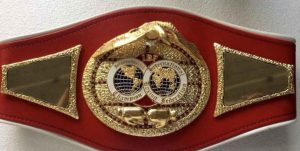
In Europe, the WBO gained acceptance more quickly than the WBA, WBC, and IBF, receiving the same recognition right away. Even though their titles are now recognised all over the world, many in the boxing community still regard the WBA as the least important sanctioning body.
The International Boxing Federation (IBF) was preceded by the United States Boxing Association (USBA). It was established in 1983 following Bob Lee’s unsuccessful bid to take over as WBA president.
Marvin Camel, a former World Boxing Council world cruiserweight champion who won the IBF title in the same class, became the organization’s first world champion. The IBF consists of 17 weight divisions, ranging from mini flyweight to heavyweight, where Anthony Joshua is the current champion.
4) World Boxing Organization (WBO):
Having been established in 1977, the International Boxing Federation is the second-youngest organisation on our list. It was first a regional governing body that collaborated with the US Boxing Association, but in 1983 it attained a major level of prominence.
The IBF, like the WBA, determines the top two contenders in each division through an elimination bout system. Any fighter who places first or second is automatically required to challenge the champion.
The IBF swiftly established itself as one of the leading boxing-sanctioning organisations, but in 1999, allegations of bribery, racketeering, money laundering, and tax evasion against its founder, Robert W. Lee, severely damaged the organization’s reputation.
The IBF’s credibility was severely damaged by these accusations, and some even believe that their status as a significant sanctioning body was purchased rather than earned.
The International Boxing Federation has one advantage in that each of its divisions only has one belt. Additionally, they are the only significant governing body that deprives champions who decline to defend their titles.
History of WBO:
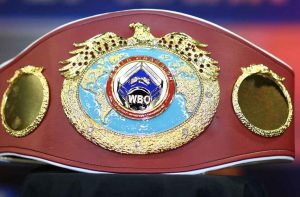
The World Boxing Organisation (WBO) is based in Puerto Rico. It was created as a part of a split from the WBA, which began when a group of businessmen from the Dominican Republic and Puerto Rico stormed out of the WBA’s 1988 annual convention in Isla Margarita, Venezuela, arguing about the rules that should be followed.
In the lighter-weight divisions, however, long-reigning champions during the 1990s such as Chris Eubank, Johnny Tapia, and Naseem Hamed gave the WBO title increasingly more prestige. Not to be forgotten are WBO heavyweight and middleweight champions Joseph Parker and Billy Joe Saunders, respectively.
The four organisations seldom collaborate because their respective revenue streams come from sanction fees, which fund title fights. Because of this, it is very challenging to hold multiple belts in the sport.
Different Types Of Boxing Champions:
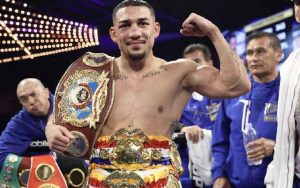
A champion ranking system was created to set the elite boxers apart from the rest because it can be difficult to determine who is the true champion of any given division due to the four main sanctioning bodies that oversee the sport. Champions go by a variety of titles depending on their achievements inside the ring, such as:
A boxer who defeats an unchallenged champion is frequently referred to as a “lineal champion.” Another name for it is “The man who beat the man.” The origins of the expression date back to the 1800s.
A modern example of a lineal champion would be Tyson Fury after he beat Wladimir Klitschko to win the IBF, WBO, and WBA super-titles. Due to personal problems, Fury had to give up his title, but since he had defeated Klitschko and had never lost in the ring, that made him a legitimate champion.
The four versions of lineal boxing champions are:
- BoxingScene lineal champion
- The Ring lineal champion (formerly the biggest lineal title)
- The Transnational Boxing Rankings Board lineal champion (the current biggest lineal title)
- The Cyber Boxing Zone lineal champion
Unified Champion:
A boxer who is titled with two or more major sanctioning bodies is considered a unified champion. A fighter who possesses all four of the major sanctioning bodies’ belts is considered the undisputed champion. Some of the undisputed champions in the modern era include Terrance Crawford, Oleksandr Usyk, and Saul “Canelo” Alvarez.
Champions in the title rings:
There are 17 weight classes in professional boxing, and five major recognised belts for each of the divisions: The WBA (World Boxing Association), WBC (World Boxing Council), IBF (International Boxing Federation), WBO (World Boxing Organisation) and The Ring.
The WBA, WBC, IBF, and WBO are the four major organisations in boxing that are recognised. Since 1922, the American boxing magazine The Ring has bestowed the title of “The Ring.”
There are very few instances in which a class can come together completely to produce an unchallenged champion due to the mixture of belts and champions. To increase their chances of winning, boxers frequently compete in different weight classes; at the moment, Manny Pacquiao is the only fighter to have won titles in eight different divisions. These are all of the boxing champions in each weight division.
Heavyweight
- WBA: Oleksandr Usyk
- WBC: Tyson Fury
- IBF: Oleksandr Usyk
- WBO: Oleksandr Usyk
- The Ring: Oleksandr Usyk
Bridgerweight
- WBA: Evgeny Tishchenko
- WBC: Lukasz Rozanski
Cruiserweight
- WBA: Arsen Goulamirian
- WBC: Noel Gevor Mikaelian
- IBF: Vacant
- WBO: Chris Billam-Smith
- The Ring: Jai Opetaia
Light heavyweight
- WBA: Dmitry Bivol
- WBC: Artur Beterbiev
- IBF: Artur Beterbiev
- WBO: Artur Beterbiev
- The Ring: Vacant
Super middleweight
- WBA: Canelo Alvarez
- WBC: Canelo Alvarez
- IBF: Canelo Alvarez
- WBO: Canelo Alvarez
- The Ring: Canelo Alvarez
Middleweight
- WBA: Erislandry Lara
- WBC: Jermall Charlo
- IBF: Janibek Alimkhanuly
- WBO: Janibek Alimkhanuly
- The Ring: Vacant
Super welterweight/Junior middleweight
- WBA: Jermell Charlo
- WBC: Jermell Charlo
- IBF: Vacant
- WBO: Tim Tszyu
- The Ring: Jermell Charlo
Welterweight
- WBA: Terence Crawford
- WBC: Terence Crawford
- IBF: Jaron Ennis
- WBO: Terence Crawford
- The Ring: Terence Crawford
Super lightweight/Junior welterweight
- WBA: Rolando Romero
- WBC: Devin Haney
- IBF: Subriel Matias
- WBO: Teofimo Lopez
- The Ring: Teofimo Lopez
Lightweight
- WBA: Gervonta Davis
- WBC: Shakur Stevenson
- IBF: Vacant
- WBO: Vacant
- The Ring: Vacant
Super featherweight/Junior lightweight
- WBA: Lamont Roach Jr.
- WBC: O’Shaquie Foster
- IBF: Joe Cordina
- WBO: Emanuel Navarrete
- The Ring: Vacant
Featherweight
- WBA: Vacant
- WBC: Rey Vargas
- IBF: Luis Alberto Lopez
- WBO: Rafael Espinoza
- The Ring: Vacant
Super bantamweight/Junior featherweight
- WBA: Naoya Inoue
- WBC: Naoya Inoue
- IBF: Naoya Inoue
- WBO: Naoya Inoue
- The Ring: Naoya Inoue
Bantamweight
- WBA: Takuma Inoue
- WBC: Alexandro Santiago
- IBF: Emmanuel Rodriguez
- WBO: Jason Maloney
- The Ring: Vacant
Super flyweight/Junior bantamweight
- WBA: Kazuto Ioka
- WBC: Juan Francisco Estrada
- IBF: Fernando Martinez
- WBO: Juno Nakatani
- The Ring: Juan Francisco Estrada
Flyweight
- WBA: Artem Dalakian
- WBC: Julio Cesar Martinez
- IBF: Jesse “Bam” Rodriguez
- WBO: Jesse “Bam” Rodriguez
- The Ring: Vacant
Light/Junior flyweight
- WBA: Kenshiro Teraji
- WBC: Kenshiro Teraji
- IBF: Adrian Curiel
- WBO: Jonathan Gonzalez
- The Ring: Kenshiro Teraji
Minimumweight/Mini flyweight
- WBA: Thammanoon Niyomtrong
- WBC: Yudai Shigeoka
- IBF: Ginjiro Shigeoka
- WBO: Oscar Collazo
- The Ring: Vacant
So, this was all about the list of boxing titles. Also read, See in Pics! Tallest female Tennis Players of all-time

